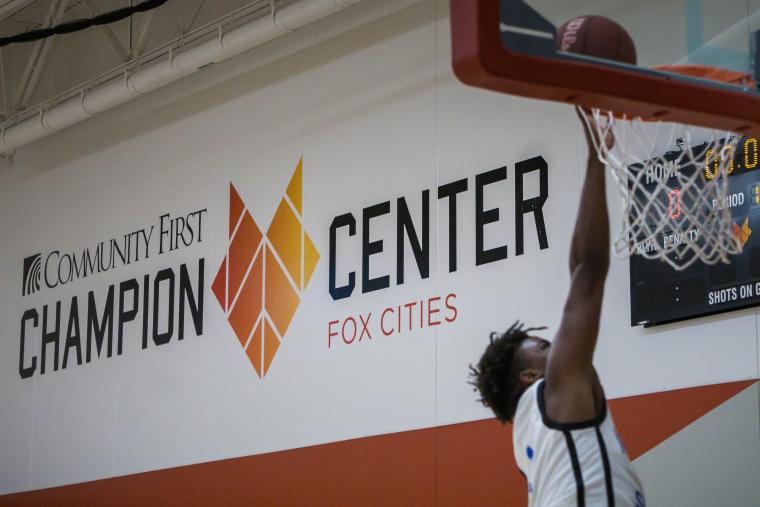

Prep Hoops, which hosts high school basketball tournaments, recently held two events and can share some best practices. The Prep Hoops #HardWorkSZN Kick Off took place over the holiday weekend, July 3-5, and the Midwest Showdown ran between July 17 and 19.
Both events were held at the Community First Champion Center in Appleton, Wisconsin. And according to Adam Ligocki, general manager of the facility, the approximately 140-team events were some of the biggest the facility had hosted since its November 2019 opening.
Reception was uniformly positive, particularly after quarantine.
“People were really excited to be in our building and play basketball again,” Ligocki notes. “We had a lot of positive reviews from everyone because they were just so happy to be able to have the chance to compete again; they hadn’t had that since COVID hit.”
Precautions included limiting spectators to 10 per team as well as using different doors for players and spectators to use.
And speaking of spectators, smart precautions were in effect there as well.
“We cleared out the spectators between every game, then we would clean the bleachers and bring the next wave in. After a team would leave their bench, we used a disinfectant spray on the benches, chairs, tables, scoreboards – we did the same thing with the spectators upstairs. Staff would guide everyone out and then disinfect the same area – the bleachers, railings and so on. We had hand sanitizing stations for everyone too.”
 Other precautions included a recommendation to wear masks (at that time, masks were not required at events).
Other precautions included a recommendation to wear masks (at that time, masks were not required at events).
“Things have changed in our state,” said Ligocki. “We didn’t have a mask mandate then; we now do. Everyone in the building has masks: players, coaches, referees, spectators and staff.”
He also noted that the tournament did not make use of the venue’s lockers, and that the concession stands were closed as well in the interest of keeping people from congregating.
“We had water and Powerade so people could grab it and go, and we also allowed people to bring in their food and energy drinks as they needed them.”
Spectators and players did not chafe at the restrictions; on the contrary, they welcomed them.
“I think ppl really, really appreciated that they were playing again,” he noted. “They were very complimentary about our staff and about how much we cared about keeping them safe.”
Despite restrictions on the numbers of spectators, the event had plenty of viewers, thanks to a contract between Prep Hoops and recording and streaming service, BallerTV, which broadcast the action from every game on every court. High school tournaments featuring rising talents are of particular interest to college coaches, making the service even more valuable.
“I know there were a lot of people who watched this on the live stream,” said Ligocki.
The Community First Champion Center’s hosting of Prep Hoops was quickly followed by its work to host a volleyball tournament – something it did with ease, since the facility totals 164,000 square feet and features three competition pods: a year-round ice rink; a fieldhouse; and a seasonal arena that transitions between an ice rink and hardwood courts. (In addition to basketball, volleyball, hockey, and figure skating, sports such as gymnastics, cheer, dance,  wrestling, futsal, and more can be held in the competition spaces). It also has elevated bleachers. The venue also includes 10 locker rooms; three team meeting rooms; onsite physical therapy clinic; a first aid/trainer’s room; a break room, concessions and a two-sided mezzanine with seating as well as additional standing room.
wrestling, futsal, and more can be held in the competition spaces). It also has elevated bleachers. The venue also includes 10 locker rooms; three team meeting rooms; onsite physical therapy clinic; a first aid/trainer’s room; a break room, concessions and a two-sided mezzanine with seating as well as additional standing room.
Large tournaments are a win for any venue but according to Ligocki, the biggest triumph was getting players onto the court and competing.
“It was really exciting once it was actually happening. We had a lot of work to do going into it but everything fell into place very well. And we learned a lot – some big things, some small things. We learned what doors to use, how to move people quickly, how important it was to have hand sanitizing, hand washing and cleaning. I think post-COVID, there are things we’re still going to be doing.”

